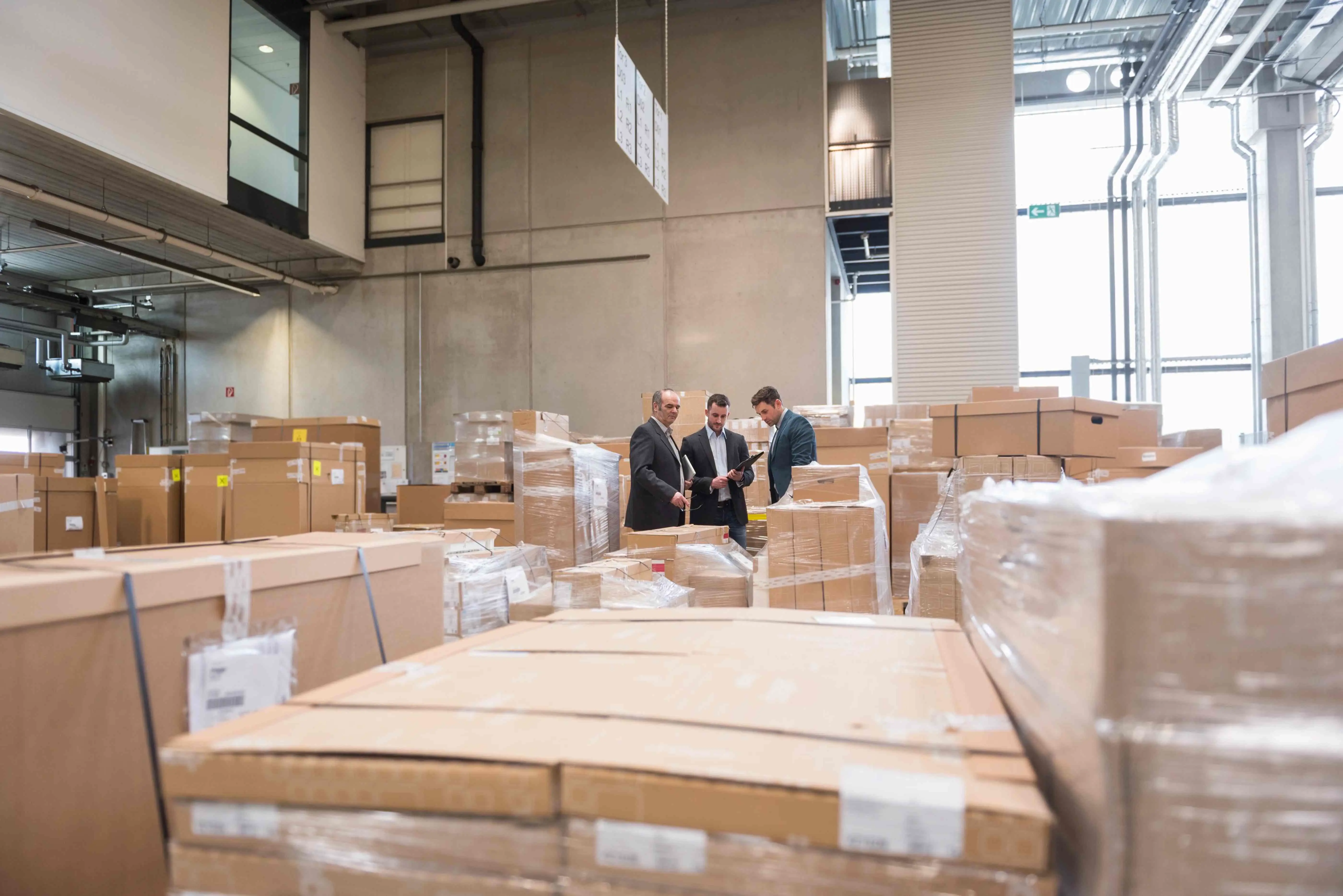A Clear Guide to Logistics and Supply Chain Management Differences

Understanding logistics supply chain dynamics is essential for business success. Logistics involves the efficient movement of goods to customers in a timely and cost-effective manner. On the other hand, supply chain management encompasses the entire process, from sourcing raw materials to delivering final products. It emphasizes collaboration and strategic planning. By integrating logistics and supply chain approaches, businesses can enhance value and optimize their operations.
Key Takeaways
Logistics is about moving and storing goods easily. It makes sure products get to customers fast and on time.
Supply chain management handles the whole process, from getting materials to sending products. It focuses on planning and teamwork.
Technology like cloud tools and machines can help logistics and supply chains. It makes work quicker and saves money.
Understanding Logistics and Supply Chain Management

What is Logistics?
Logistics is about moving, storing, and managing goods and information. It makes sure products get to customers quickly and on time. Key parts of logistics include shipping, tracking inventory, and completing orders. These tasks affect how well a business serves its customers and handles trade.
Effect on Service Quality | Effect on Trade Success | |
|---|---|---|
Transport Systems | Big Impact | Big Impact |
Tracking Shipments | Big Impact | Big Impact |
Fair Pricing for Orders | Big Impact | Big Impact |
Fast Customs Clearance | Big Impact | Big Impact |
On-Time Deliveries | Big Impact | Big Impact |
Good logistics management keeps customers happy and lowers costs. It also helps businesses handle problems and stay strong during changes.
What is Supply Chain Management?
Supply chain management plans and controls how products are made and delivered. It includes buying materials, making products, sending them out, and handling returns. It connects different companies to turn raw materials into finished items.
Supply chain management uses smart planning to work better. It combines logistics, buying, and making products to save money and add value. Companies with great supply chain management often beat competitors by cutting costs and pleasing customers.
How Logistics Fits into the Supply Chain
Logistics is an important part of the supply chain. It helps goods and information move smoothly between suppliers, factories, and buyers. A well-organized logistics system saves money, works faster, and handles problems better.
Logistics also helps supply chain members work together. This teamwork improves the whole supply chain and builds stronger partnerships. By managing logistics well, businesses can improve worldwide operations and succeed long-term.
Tip: Using tools like cloud software and robots can make logistics and supply chain management much better. These tools help businesses work faster, make smarter choices, and save money.
Key Differences Between Logistics and Supply Chain Management
Scope and Focus in Logistics Supply Chain
Logistics is about moving and storing goods. It makes sure products get to customers quickly. Tasks like shipping, storage, and tracking inventory are part of logistics. Supply chain management looks at the bigger picture. It manages everything from getting raw materials to delivering products. This includes buying, making, and even handling returns. Logistics handles specific jobs, while supply chain management connects all these steps.
Strategic vs. Operational Approaches
Logistics focuses on daily tasks like deliveries and warehouse work. It aims to be efficient every day. Supply chain management plans for the future. It works on big goals like better supplier relationships. It also improves global supply systems. When logistics supports these goals, businesses do better.
Timescales and Planning in Supply Chain Management
Supply chain management plans for now and the future. For example:
A test compares shipping routes to find the best one.
Another test checks delivery times and costs for patterns.
These tools help plan for different timeframes. Logistics often focuses on quick needs, like delivering on time.
Value Creation and Cost Efficiency
Good supply chain management saves money and adds value. For example, Sunsweet Growers improved forecasts by 15-20%. They also cut waste by 30% and reduced warehouses from 28 to 8. Logistics helps by improving transport and storage. Supply chain management ensures these efforts match business goals.
Data Usage and Technology Integration
Modern supply chains use data and technology a lot. Predictive tools help guess trends, and IoT tracks shipments live. AI and robots make inventory and logistics faster and more accurate. Automation speeds up work and reduces mistakes. These tools keep supply chains flexible and ready for changes.
Stakeholder Management and Collaboration
Teamwork is important in supply chain management. Cloud tools and IoT sensors share data in real-time. This helps suppliers, factories, and customers work together better. Smart tools also predict demand and manage stock. By working together, businesses create a stronger and smoother supply chain.
Practical Example: JUSDA’s Role in Logistics and Supply Chain
Logistics in Action: JUSDA’s Warehouse Solutions
JUSDA’s warehouse services show how logistics can work better. They offer many options like Vendor Managed Inventory (VMI) and cross-border shipping. Advanced warehousing is also part of their services. These tools help businesses run smoothly and efficiently. JUSDA uses smart tech like RFID and Warehouse Management Systems (WMS) to improve logistics.
The table below shows key parts of JUSDA’s warehouse services:
Evidence Type | Description |
|---|---|
Wide Service Options | JUSDA offers VMI, cross-border shipping, and warehousing for smooth operations. |
Smart Technology Use | JusLink platform uses RFID and WMS to make processes faster and better. |
Focus on Customers | Custom solutions meet client needs, helping high-value industries succeed. |
Local Market Strategy | Attention to North America improves speed and competition. |
These services make logistics easier, saving money and improving service.
Supply Chain Management in Action: JUSDA’s JusLink Platform
JUSDA’s JusLink platform changes supply chain management with digital tools. You can track purchase orders in real-time for better control. Risk tools help fix problems early before they grow. Communication tools make working with suppliers easier and smoother.
Key benefits of the JusLink platform include:
AI predicts when shipments will arrive with Dynamic ETA models.
Inventory tools check stock and predict future needs.
Control towers show data and KPIs to improve operations.
One-stop transport management makes tasks simpler.
Other features include:
Real-time data helps make smarter choices.
Automation in warehouses reduces mistakes and boosts speed.
Using JusLink helps improve global supply chains and reach big goals.
Common Misconceptions About Logistics and Supply Chain
Why Logistics is Often Confused with Supply Chain Management
People often mix up logistics and supply chain management. This happens because logistics is part of the bigger supply chain management system. Logistics focuses on moving and storing goods. Supply chain management handles everything, from getting materials to delivering products.
Here’s why this confusion exists:
Logistics and supply chain management are closely linked, making roles unclear.
Many companies don’t explain these terms well, causing mixed use.
Limited research on their connection adds to the misunderstanding.
Dr. Jason Miller, a supply chain expert, says knowing the difference improves efficiency. When you see logistics as part of supply chain management, you can improve your business.
Aspect | Description |
|---|---|
Interdependence | Logistics is within supply chain management, causing role overlap. |
Importance of Integration | Good logistics boosts customer happiness and long-term success. |
Clarifying the Distinction with Real-World Scenarios
Think about a company making smartphones. Supply chain management handles everything, like getting metals for batteries and delivering phones to stores. Logistics ensures metals arrive at factories and phones reach stores on time.
Another example is JUSDA’s JusLink platform. It combines logistics with supply chain management tools like tracking and analytics. This shows how logistics supports bigger supply chain management goals. By learning these differences, you’ll see how both help create smooth global operations.
Note: Knowing how logistics and supply chain management differ helps you make better choices and improve your business.
Choosing the Right Focus for Your Business
When to Prioritize Logistics
Focus on logistics when you need better daily operations. It handles moving, storing, and delivering goods to customers. This ensures products reach buyers without problems. For example, checking truck loading times can show delays. Fixing these issues improves speed and keeps customers happy.
In fast-moving markets, logistics is very important. Quick deliveries and using equipment well help meet demand. Tools like automation and data tracking make processes faster. These tools also help you adjust to changes and stay ahead of competitors.
When to Prioritize Supply Chain Management
Choose supply chain management when you want to improve the whole process. This includes finding suppliers and managing inventory. Watching costs and quality helps save money while keeping standards high.
Supply chain management also helps with long-term planning. It connects with company goals to stay competitive. Tools like demand prediction and live tracking improve results. Businesses with global supply chains often need this focus to solve international challenges.
Balancing Both with JUSDA’s Supply Chain Solutions
Using both logistics and supply chain management is key for success. JUSDA shows how to balance them well. Their JusLink platform combines logistics tasks with supply chain planning. It uses live data, smart tools, and automation to improve work.
JUSDA’s warehouse services also show this balance. They mix logistics tools like RFID tracking with supply chain strategies like better inventory control. These services cut costs and make work smoother. By using JUSDA’s help, you can match logistics and supply chain management to reach your goals.
Tip: Set clear goals for your operations using SMART (Specific, Measurable, Achievable, Relevant, Time-bound) criteria.

JUSDA Solutions
To provide you with professional solutions and quotations.
Knowing how logistics and supply chain management differ is important. Logistics moves goods quickly, while supply chain management handles everything. JUSDA combines both using tools like JusLink. These tools share live data and improve teamwork. This method saves money, works better, and boosts success.
Tip: Try supplier teamwork and flexible deals to improve your supply chain.
See Also
Transforming Logistics Through Innovative Supply Chain Solutions
Achieving Success in High-Tech Manufacturing With Lean Logistics
A Comprehensive Approach to Managing Supply Chain Risks
A Complete Guide to Overcoming Supply Chain Disruptions
Discovering Top Global Logistics Companies: The Definitive Guide
